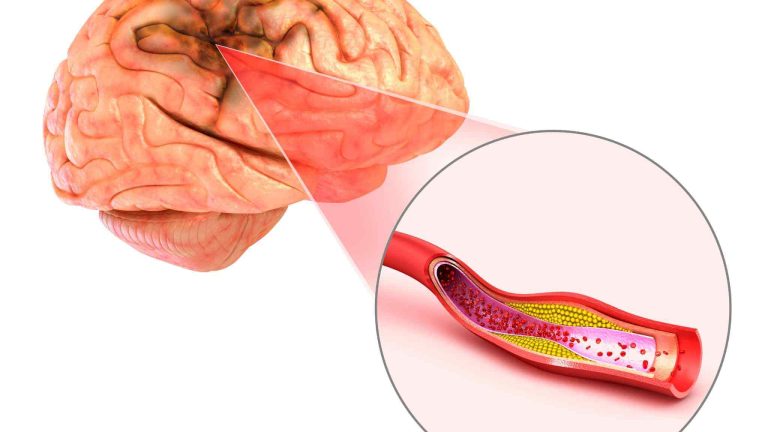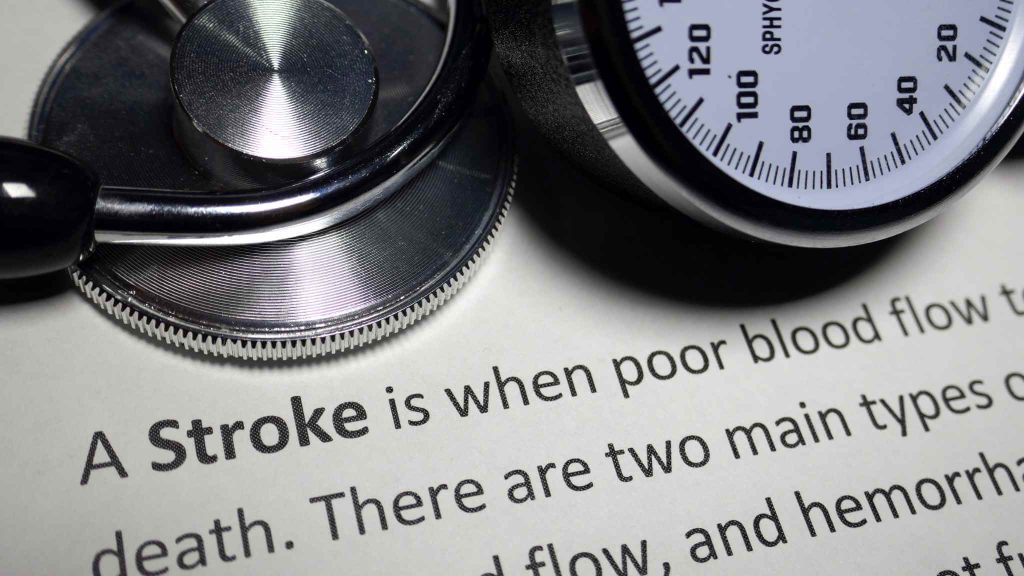First Aid For A Stroke

A stroke is a serious medical condition that can be debilitating and even deadly.
Every second counts in the event of a stroke, and it’s important to act fast if you think you or someone else may be having one.
Knowing what steps to take in the event of a stroke can save lives. That’s why we’re discussing the basics of first aid for a stroke in this blog post. Read on to find out how to recognize the signs of a stroke, what actions you should take, and how best to prepare for such an event.
What is a stroke?
A stroke is a medical emergency that occurs when the blood supply to the brain is cut off. The symptoms of a stroke depend on the area of the brain that is affected. They can include paralysis, difficulty speaking, and vision problems.
If you think someone may be having a stroke, it is important to call emergency services immediately.
How do I recognise a stroke?
If you think someone may be having a stroke, act F.A.S.T and call an ambulance immediately.
F.A.S.T stands for:
Face – has their face fallen on one side? Can they smile?
Arms – can they raise both arms and keep them there?
Speech – is their speech slurred or confused?
Time – time is critical. If you spot any of these signs, call emergency services immediately.
What are the symptoms of a stroke?
There are many different symptoms of a stroke, and they vary depending on the type of stroke. The most common symptom of a stroke is sudden paralysis or numbness in the face, arm, or leg. Other symptoms include:
- Sudden dizziness
- Sudden severe headache
- Sudden difficulty speaking or understanding speech
- Sudden difficulty seeing in one or both eyes
- Sudden confusion
- Sudden trouble walking
- Sudden onset of weakness or numbness down one side of the body

What makes you high risk for a stroke
There are a number of factors that can make someone at high risk for a stroke. These include:
- High blood pressure is one of the most important risk factors for stroke. If your blood pressure is not controlled, it puts extra strain on your arteries and heart and can lead to a stroke.
- Smoking: Smoking damages your arteries and makes them more likely to become blocked. This increases your risk of having a stroke.
- Diabetes: This condition increases your risk of developing atherosclerosis (hardening of the arteries), which can lead to a stroke.
- Heart disease: If you have any type of heart disease, you have an increased risk of having a stroke. This includes conditions such as atrial fibrillation (an irregular heartbeat) and coronary artery disease.
- Age: The older you are, the greater your risk of having a stroke. This is because the arteries tend to become less flexible and more damaged as we age.
There may be some genetic factors that can cause a stroke as well, so knowing your family history is important.

First aid for a stroke
If someone you know experiences symptoms of a stroke, it is important to act F.A.S.T (see above) and call emergency services. While waiting for medical attention, there are a few things you can do to help.
- Try to keep the person calm and comfortable.
- If the person is able to move, help them lay down on their side.
- Loosen any tight clothing around their neck or head.
- If the person starts vomiting, turn them onto their side to prevent them from aspirating on their vomit.
- Do not attempt to give the person anything by mouth, they are likely having trouble swallowing.
- Stay with the person until medical help arrives.

What is the treatment for a stroke?
There are two types of treatments for strokes: medical and surgical.
Medical treatments aim to stop the stroke by quickly dissolving the clot or blockage causing the stroke. This can be done with a clot-busting drug given through a vein in your arm, or with mechanical devices that remove or break up clots.
Surgical treatments aim to relieve pressure on the brain caused by bleeding from the stroke. This can be done by removing part of the skull to allow the surgeon access to the bleed.
How do I position someone who has had a stroke?
If someone is having a stroke, it is important to act quickly and get them to a hospital as soon as possible. But before you do that, there are a few things you can do to help position the person properly and make sure they are comfortable.
First, if the person is conscious, have them lie down on their side. This will help prevent aspiration if they vomit or experience seizures.

If the person is not conscious, you will need to position them in the recovery position. To do this, gently roll them onto their side and then tuck their lower arm under their head for support. Next, bring their upper leg up so that it is in line with their body.
Finally, extend their lower leg out behind them. This will keep them from rolling onto their stomach and will help maintain an open airway.
What are the types of stroke?
There are two types of stroke: ischemic and hemorrhagic.
An ischemic stroke also called a cerebral infarct, is the most common type of stroke. It occurs when a blood clot blocks an artery supplying blood to the brain.
A hemorrhagic stroke occurs when a blood vessel in the brain ruptures and bleeds into the surrounding tissue.

What should a bystander do?
If you think someone is having a stroke, act F.A.S.T and call an ambulance:
Face: Ask the person to smile. Does one side of the face droop?
Arms: Ask the person to raise both arms. Does one arm drift downward?
Speech: Ask the person to repeat a simple phrase. Is their speech slurred or strange?
Time: If the person shows any of these symptoms, time is critical. Call an ambulance immediately.
Why is there a need to act fast with a stroke?
A stroke is a serious medical emergency that requires immediate treatment. When someone has a stroke, every minute counts. That’s because the sooner you get to the hospital, the more likely you are to receive life-saving treatment.
Do not drive yourself or the person to the hospital. Emergency medical staff can start life-saving treatment on the way to the hospital.

When you arrive at the hospital, doctors will use special tests to quickly diagnose whether someone is having a stroke and what type it is.
About 87% of all strokes occur when a clot blocks blood flow to the brain. Hemorrhagic strokes happen when a blood vessel in the brain ruptures or leaks.
What can you do to reduce your risk of a stroke?
There are several things you can do to reduce your risk of having a stroke. You can:
- Control your blood pressure. High blood pressure is a major risk factor for stroke. If you have high blood pressure, work with your doctor to control it.
- Eat a healthy diet. A healthy diet can help you maintain a healthy weight, control cholesterol and blood sugar, and get the nutrients you need to stay healthy.
- Exercise regularly. Exercise helps keep your heart and blood vessels healthy and can help control your blood pressure.
- Don’t smoke. Smoking damages your blood vessels and increases your risk of stroke. If you smoke, quit.
- Limit alcohol use. Too much alcohol can increase your blood pressure and contribute to other health problems that increase your risk of stroke.

Is a stroke reversible?
While strokes are serious and can lead to long-term complications, it is important to remember that there is also a good chance that the person could make a full or partial recovery.
Ischemic strokes can sometimes be treated with a clot-busting drug. If given within four hours of the onset of symptoms, this can dissolve the clot and restore blood flow to the brain.
It is important to note, however, that this medicine is not appropriate for all patients – those with certain medical conditions or who have already had a hemorrhagic stroke, for example, should not receive this treatment.
For hemorrhagic strokes, the goal is to stop the bleeding and reduce pressure on the brain. This may involve surgically removing the damaged blood vessel or clipping it off at its source. In some cases, medications may be used to try to control the bleeding.

Again, time is of the essence when it comes to treating a stroke – every minute counts!
Want more? We’ve got you covered…
Our Baby First Aid Courses
Our baby first aid courses are available in person in your home and online. We run classes in your home with groups of 2, 4 or up to 10 in Sydney & Melbourne and you can book in 3 easy steps!
- Pick your class
- Follow the prompts to purchase
- We will contact you within 24 hours to lock in your date of choice
Our First Aid Certificate Courses
We run most of the popular first aid courses Australia wide. HLTAID011 Provide First Aid, HLTAID009 Provide CPR, HLTAID012 Provide First Aid in an Education & Care Setting, RAMOAP (anaphylaxis), Mental Health first aid and CPR/LVR to name a few.
Book your public spot online or contact us if you have a group of 5+ people for onsite training.
Here are some other resources you may enjoy!
FREE GUIDE: Your Virtual Baby First Aid Kit
FREE GUIDE: Introducing Common Allergy Foods & Allergic Reactions
FREE Workplace Emergency Preparedness Plan: Grab this at the bottom of every page!
Follow for baby & child first aid and allergy info and tips on Instagram & TikTok, all @thenestcpr
